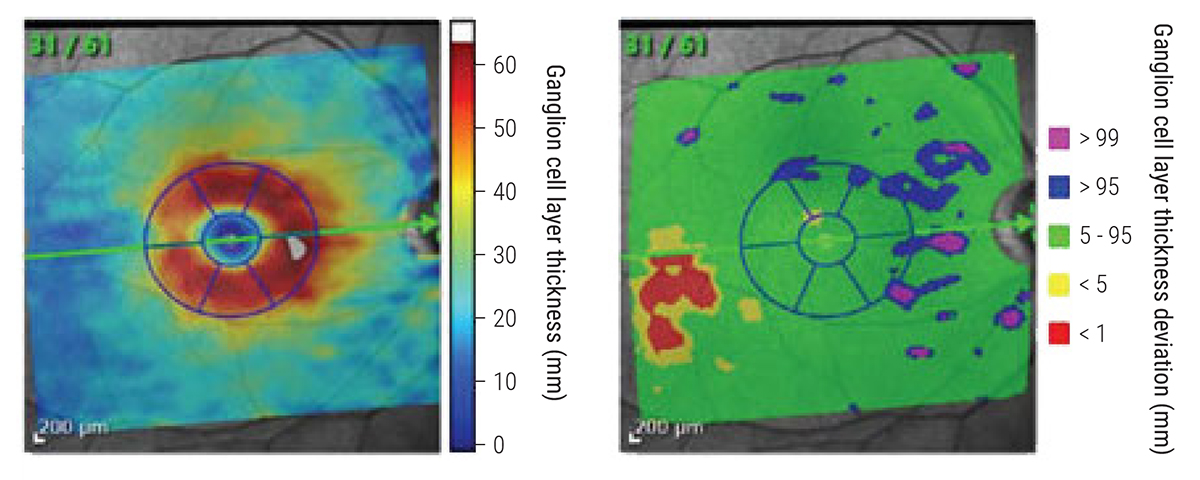 |
| Macular GCL thickness may be a useful parameter in the evaluation of glaucoma progression. Photo: James Fanelli, OD. Click image to enlarge. |
OCT has become the accepted standard for objective assessment of the peripapillary RNFL, neuroretinal rim and macula in glaucoma progression. One of the key factors determining the rate of change of OCT parameters is the severity of glaucoma at the time of detection. Researchers recently examined the relationship between the rate of change of different OCT thickness parameters—minimum rim width (MRW), RNFL and ganglion cell layer (GCL)—and the severity of glaucoma.
Glaucoma severity at baseline did not significantly influence the rate of subsequent MRW, RNFL and GCL thickness change after correction for multiple confounding covariates. Healthy subjects as well as patients with glaucoma showed significant reduction of MRW, RNFL and GCL thickness over time. The rate of change of these parameters was not significantly faster in glaucoma patients than in healthy subjects, except for GCL thickness.
The researchers followed 132 patients with glaucoma (mean age: 74.3) and 57 healthy participants (mean age: 67.2) for a median of 4.3 and 3.7 years, respectively. All participants had OCT scans at six-month intervals.
Healthy participants had statistically significant deterioration in MRW (-1.66µm/year), RNFL (-0.46µm/year) and GCL thickness (-0.22µm/year). While glaucoma patients had a faster rate of change in each parameter, only GCL thickness showed a statistically significant overall difference (-0.17µm/year). Older baseline age was associated with faster GCL thickness change (-0.07µm/year), but other parameters weren’t.
“Longitudinal observation of MRW, RNFL and GCL thickness over the same period in treated glaucoma patients and healthy subjects did not show a tangibly higher utility of a particular OCT parameter for measuring the rate of change according to disease severity,” they wrote in their paper. “All parameters showed significant age-related reductions.”
However, they noted the stronger relationship between GCL thickness change and aging might have allowed for detection of significant differences in the rate of change between the two groups. “Macular GCL thickness may be a useful parameter for monitoring structural glaucoma progression throughout the course of the disease,” they concluded.
Kim YW, Sharpe GP, Hutchinson DM, et al. Impact of glaucoma severity on rates of neuroretinal rim, retinal nerve fiber layer, and macular ganglion cell layer thickness change. Am J Ophthalmol. February 1, 2022. [Epub ahead of print]. |

